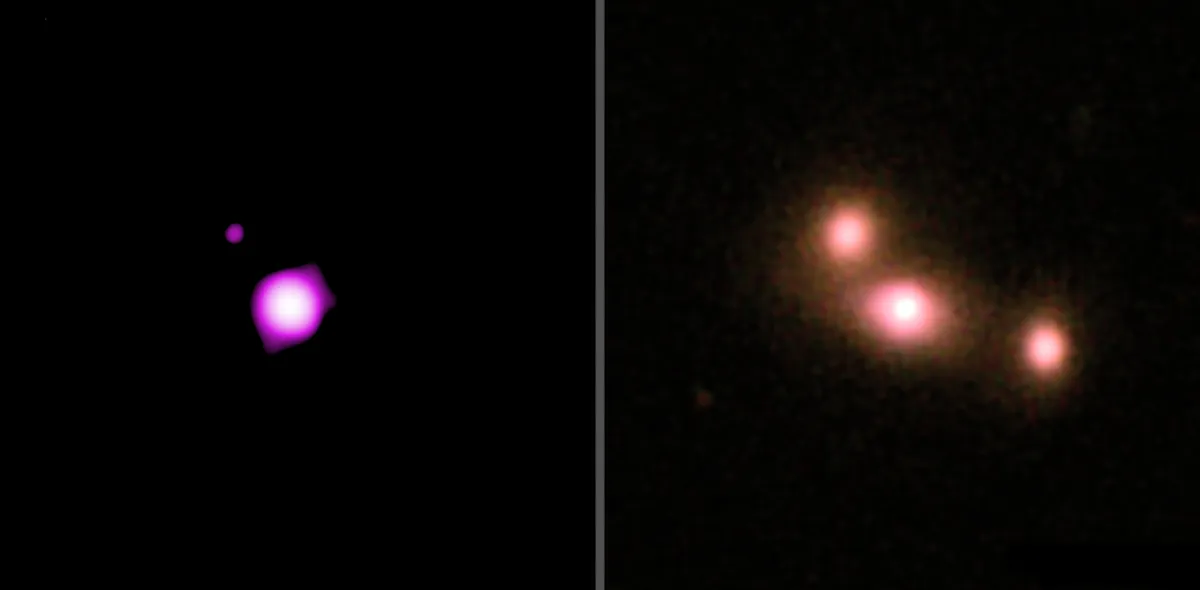The colliding and merging of two galaxies is a phenomenon that’s becoming well documented in astronomy, but what about mergers between three galaxies?
What happens when a trio of galaxies collide with each other, and what are the consequences for the supermassive black holes at the centres of those galaxies?

A new study is seeking to understand the answers to those questions. It is the first systematic analysis of what happens to supermassive black holes when three galaxies collide.
Most galaxies in the observable Universe have a supermassive black hole at their centre. What’s not clear is the role these galaxies play in the formation and evolution of galaxies. We also, for example, don't definitively know where the nearest black hole in our Galaxy is.
The images released as part of this new study contain data from 2 of 7 galactic collisions studied by astronomers.
X-ray data from the Chandra X-ray Observatory is seen in purple on the left, while optical data from the Hubble Space Telescope and the Sloan Digital Sky Survey (SDSS) can be seen on the right.
The bright points of light in the X-ray images indicate hot cosmic gas falling towards each supermassive black hole.
The triple galaxy mergers were discovered by astronomers studying data from SDSS and NASA's WISE mission. They were then able to compare this with X-ray data in the Chandra archives.
Doing so, the team was able to identify 7 triple galaxy mergers located at a range of between 370 million and 1 billion lightyears from Earth.

Computer software enabled the astronomers to locate X-ray sources and thus the locations of the supermassive black holes.
This is because material falling inwards is heated to millions of degrees and shines brightly in X-rays.
The results reveal the effects of these mergers on the supermassive black holes.
One merger was found to have a single, growing supermassive black hole; four were found with double growing supermassive black holes and one with a triple.
The final merger studied seems to have no X-ray emission that could be detected coming from a supermassive black hole, likely meaning none of the black holes was sucking in cosmic matter.
In the systems that do contain multiple black holes, the distances between them can range from about 10,000 to 30,000 lightyears.
The results were presented by Adi Foord, an astronomer based at the University of Michigan, as part of the 237th meeting of the American Astronomical Society. Foord worked on the study as part of her Ph.D.
Image stats
Observatories Chandra X-ray Observatory, Hubble Space Telescope, Sloan Digital Sky Survey
Release date 14 January 2021
Image credit X-ray: NASA/CXC/Univ. of Michigan/A. Foord et al.; Optical: SDSS & NASA/STScI
